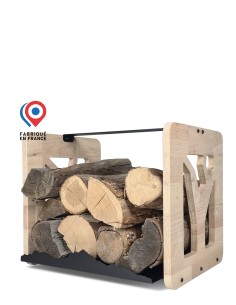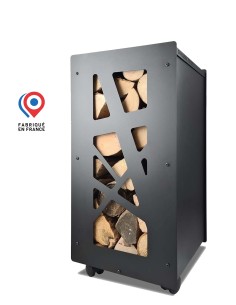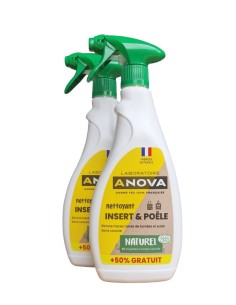
For owners of wood stoves, fireplaces, and inserts, the question often comes up: should I use compressed wood logs or classic wood logs? It's important to understand the differences between these two fuel options to make the choice best suited to your needs. To help you with this choice, here is some up-to-date information on the characteristics and use of these two types of wood for your wood stoves, fireplaces, and inserts:
How are compressed wood logs and classic wood logs made?
Compressed Wood Logs
Compressed wood logs are made from wood residue chipped into shavings and untreated sawdust, making them an ecological solution that repurposes wood cutting waste. These shavings are dried and compressed to obtain densified wood logs with a moisture content of less than 10%. This manufacturing process is the same as that used for wood pellets. Compressed wood logs have a high calorific value, ranging between 4.6 and .
Dry Firewood Logs
Classic wood logs come from sustainably managed forests and are composed of the best species of hard hardwood, such as oak, hornbeam, and beech. These logs are kiln-dried or naturally air-dried to reach a moisture content below 20%. With a calorific value greater than 3.9 kWh/kg, these logs can provide consumption savings of up to 30% compared to traditional wood with a moisture content of 30%.
Use of Compressed Wood and Wood Logs
Compressed wood logs offer clean, dust-free handling, ensuring up to 1.5 hours of consistent burning. Thanks to their compression, they allow for more compact storage, reducing the necessary volume compared to traditional logs. Their high calorific value guarantees immediate and efficient heat, making them ideal for small spaces.
Classic wood logs are generally sold dry, split, and largely debarked, and are available in various lengths from 23 cm to 50 cm. However, options for raw, untransformed wood sections may also be available. This type of wood fuel can be more affordable as it requires less processing. The improved performance of wood heating systems tends to favor the use of smaller wood logs.
Which Log Solution for Your Wood Heating?
For your wood heating, it's essential to choose quality wood logs with an appropriate size—whether they are compressed or classic—to ensure optimal combustion and efficient heat. It's important to consider proper management and optimal wood storage to avoid excessively high moisture content. This is why it's indispensable to equip yourself with indoor wood log storage next to your stove, fireplace, or wood insert. Various wood storage solutions are available to combine practicality and design. Whether used as a supplement or a replacement, be sure to select a reliable wood supplier to fully benefit from your wood heating system.







